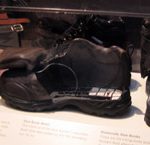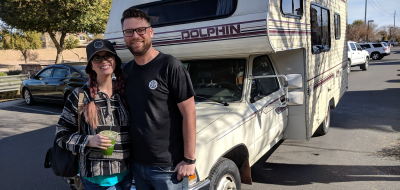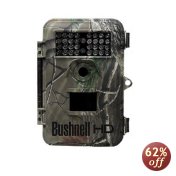Aesop’s fable, “the Fox and the Cat”, the fox boasts to the cat of its clever devices for escaping its enemies.

No matter how technologically advanced a camera is, it still needs a photographer setting its dials, pressing its buttons, and pointing it at something interesting. Photo above is Mesa Verde National Park, Colorado. © Rex Vogel, all rights reserved
“I have a whole bag of tricks,” he boasts, “which contains a hundred ways of escaping my enemies.”
“I have only one,” said the cat. “But I can generally manage with that.”
Just at that moment they heard the cry of a pack of hounds coming towards them, and the cat immediately scampered up a tree and hid herself in the boughs.
“This is my plan,” said the cat. “What are you going to do?”
The fox thought first of one way, then of another, and while he was debating, the hounds came nearer and nearer, and at last the fox in his confusion was caught up by the hounds and soon killed by the huntsmen.
Miss Puss, who had been looking on, said, “Better one safe way than a hundred on which you cannot reckon.”
Why am I telling you this tale?
The temptation for many photographers is to think like the fox, but you’re better off thinking like the cat.
You’ll take better photos with a selection of equipment that you thoroughly understand and that’s well suited to your style of photography than with an overflowing bag of tricks that you’ve never quite mastered.
The key to choosing the best camera for YOU is picking the camera with which you’re comfortable and which serves your photo needs.
That’s easier said than done.
With an expanding variety of camera types, from multi-megapixel compact cameras to the most sophisticated pro D-SLRs, plus new options like mirrorless cameras and hybrid still and video models.
The best advice I can give you is to go to a store and shop for cameras in person. Comparing specs and features online is not a substitute for handling equipment, exploring a camera’s menus, and testing its responsiveness. That said it’s good to know the general type of camera that’s right for you beforehand to help narrow the field and focus your comparisons.
Interchangeable-lens cameras
There has been considerable innovation in digital camera technology during the past several years, including the emergence of “mirrorless” interchangeable-lens cameras.
What started with a few Micro Four Thirds cameras from Olympus and Panasonic has grown into a wide selection of mirrorless models with options from an ever-expanding array of manufacturers.
The mirrorless design competes with the traditional D-SLR by making smaller camera bodies and lenses possible, which for many photographers is highly desirable. It also enables these cameras to do things D-SLRs can’t, like offer full-time Live View and electronic eye-level viewfinders.
If you have smaller hands, you may be more comfortable with the smaller and lighter mirrorless models than with a traditional SLR body.
One drawback of typical mirrorless cameras is that they rely on contrast-detection autofocus, which is inherently slower than the phase-detection systems in D-SLRs.
Compact cameras

The 16 megapixel Nikon Coolpix P510 is a compact camera in the superzoom class, that sports a 42X optical zoom, covering a currently unmatched focal range of 24-1000mm (equivalent), and a new 16MP CMOS sensor. (Source: dpreview.com)
Though the expandability of interchangeable-lens systems is an advantage for most photographers, there’s a lot to be said for cameras small enough to slip into your pocket. After all, the “right” camera is the one you actually take with you.
If you don’t see yourself carrying a D-SLR—and maybe an extra lens or two—you’re better off with a camera you find more comfortable.
There are also “advanced” compacts which, though often larger than your pocket, typically offer a big-range zoom lens and improved performance compared to smaller models. These cameras try to bridge the gap between portability and performance. They’re larger than pocket cameras, though still smaller than most D-SLRs, and eliminate the need to carry multiple lenses.
Remember the cat and the fox.
Don’t forget that the goal is taking great photos, and that your camera equipment, whatever you choose, should make this easier. Ultimately, the best selections are those you’re inspired to master.
Please Note: This is the third in a series of stories on Digital Photography and RVing
Worth Pondering…
…amateurs worry about equipment,
professionals worry about money,
masters worry about light,
I just take pictures.
—Vernon Trent
You May Also Like
- Heartland RV Bighorn & Cyclone No. 1 in Sales
- Newmar Expands Partnership with Freightliner
- Winegard Antennas Available at Home Depot
- RVC Outdoor Destinations Completes Garden of the Gods Upgrade
- Volkswagen’s California Van Marks 25 Years with Anniversary Edition
If you enjoy these articles and want to read more on RV travels and lifestyle, visit my website: Vogel Talks RVing.








Anonymous
I agree with the recommendations presented in this article. When I started RVing in 2008 I knew that I would be taking many more pictures than normal and purchased a Nikon DSLR. I also purchased a larger lens to take pictures from a distance. I really liked that camera and got great results as we crisscrossed america (all lower 48 states). When that camera got stolen in a KOA in Orlando FL I bought a similar Canon DSLR and larger lens. That camera has also worked out very well for me over the past several years.
This past year (last Christmas) I started lusting for a larger lens than the 250 MM model I had. I ended up buying a NikonCoolpix P510 camera. It is more compact than my DSLR and the lens telephotos to 42X zoom. No carrying around a pair of lens. The camera can shoot acceptable photos from a much greater distance than my 250 MM lens and even greater than the 600MM lens that I was lusting after. It is very easy to use. This was my primary go to camera this winter snow birding. The DSLR is faster and can take better pictures but for most of the pictures I take I am very happy with this camera. I also looked at a comparable Canon (SX50 I think 50X).
I am not a serious photographer. I just take snapshots to remember our travels. Some of the wildlife photos have come out really well with these cameras. In general scenic wonder can be done with any camera (although the DSLR does take a great scenic shot).
I hope this comment will help.
One further comment, I do carry and iPhone and it's great to always have a phone camera on your hip. There are many many times that I have taken pictures with my iPhone when after the fact I have wished I had my other cameras to take that picture.